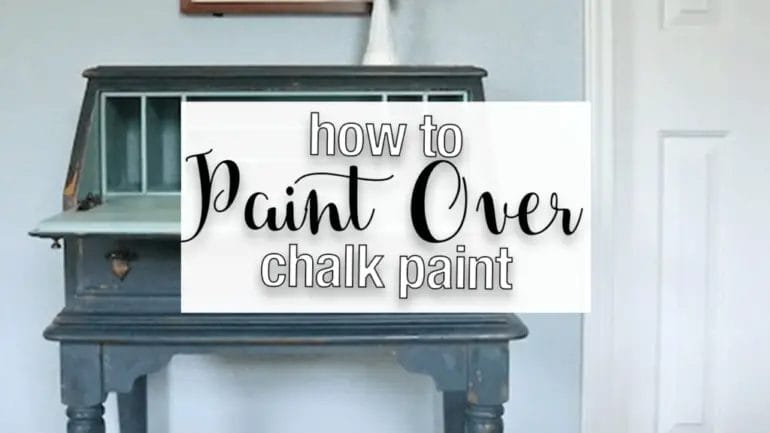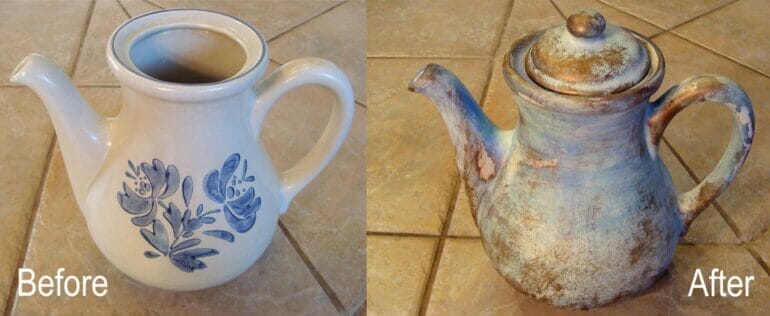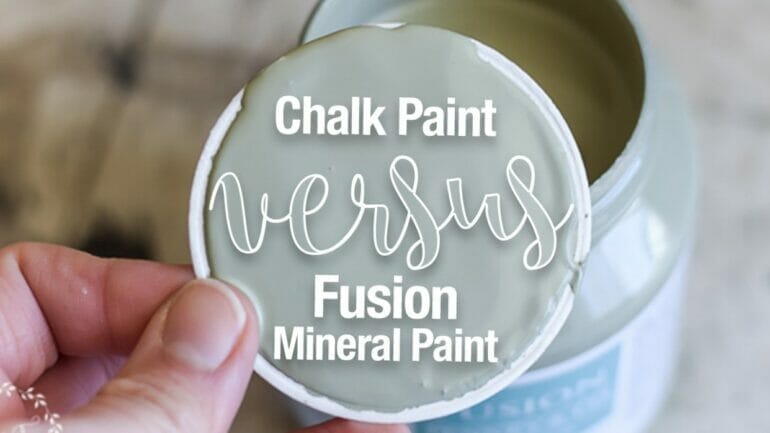If you’re planning to paint over chalk paint with acrylic paint, you’ll be pleased to know that it’s entirely possible and can yield fantastic results. Acrylic paint can adhere well to a chalk paint surface, creating a smooth and durable finish. Whether you’re looking to update the color or add detailed designs, acrylic paint offers endless possibilities. Just make sure to properly clean and prepare the surface before applying the acrylic paint for optimal adhesion and longevity.

Exploring the Versatility of Chalk Paint and Acrylic Combination
Chalk paint and acrylics are two popular types of paint that offer different qualities and benefits. Chalk paint, known for its matte finish and shabby chic appeal, is a versatile option for furniture and home decor projects. Acrylic paint, on the other hand, is known for its vibrant colors and quick-drying nature, making it ideal for various art applications. Combining these two paints can result in unique and stunning effects, offering even more possibilities for your creative ventures.
When combining chalk paint and acrylics, you can achieve a wide range of effects, from subtle blending to bold contrast. The matte finish of chalk paint provides a beautiful base for layering and distressing techniques, while the vibrant pigments of acrylics add a pop of color and depth to your artwork.
One of the main advantages of using a chalk paint and acrylic combination is the ability to create texture. Chalk paint has a thicker consistency compared to acrylics, allowing you to build up layers and create interesting textures on your canvas or furniture. By applying a base layer of chalk paint and then adding layers of acrylics on top, you can achieve a multi-dimensional effect that adds visual interest to your piece.
Another advantage of using these two paints together is the ability to achieve a worn or aged look. Chalk paint is known for its ability to distress easily, and when combined with acrylics, you can enhance this effect. By applying layers of acrylics and then sanding or distressing the surface, you can create a vintage or weathered appearance that adds character and charm to your project.
In addition to creating texture and a distressed look, combining chalk paint and acrylics also allows you to experiment with color combinations. Acrylics come in a wide range of colors, and by mixing them with chalk paint, you can create custom shades and hues. Whether you want a subtle and muted color palette or a bold and vibrant one, the combination of these two paints offers endless possibilities for color experimentation.
Furthermore, the combination of chalk paint and acrylics is not limited to artwork and furniture. You can also use them to transform other surfaces, such as glass, metal, and plastic. The adhesive nature of chalk paint allows it to adhere well to these surfaces, while the acrylics provide a protective layer and add a decorative touch.
When working with a chalk paint and acrylic combination, it’s important to consider the compatibility of the two paints. While they can be used together, it’s recommended to apply a layer of clear sealer or varnish over the acrylics to protect the artwork and ensure its longevity.
Summary
The combination of chalk paint and acrylics opens up a world of possibilities for creative projects. From creating texture and achieving a distressed look to experimenting with color combinations, these two paints complement each other beautifully. Whether you’re an artist, a DIY enthusiast, or simply looking to add a unique touch to your home decor, exploring the versatility of chalk paint and acrylics is sure to inspire your creativity.

Achieving a Professional Finish: Tips for Painting Over Chalk Paint with Acrylic
Chalk paint has gained popularity in recent years due to its matte finish and vintage appeal. However, there may come a time when you want to change the look of your chalk-painted piece and opt for a different color or finish. In such cases, painting over chalk paint with acrylic is a great option. In this section, we will discuss some tips and techniques to help you achieve a professional finish when painting over chalk paint with acrylic.
Preparation is Key
Before you begin painting over chalk paint, it is essential to prepare the surface properly. Start by cleaning the piece with a mild detergent and water to remove any dirt or grease. Once clean, lightly sand the surface using fine-grit sandpaper. This step will help create a smooth and even base for the new paint to adhere to. After sanding, wipe the piece down with a damp cloth to remove any dust particles.
Choose the Right Acrylic Paint
When it comes to painting over chalk paint, choosing the right acrylic paint is crucial. Look for a high-quality acrylic paint that is compatible with the surface you are painting. Acrylic paints come in various finishes, such as matte, satin, and gloss. Consider the desired look and feel of your project before selecting a finish. Ensure that the acrylic paint you choose is water-based for easy cleanup and durability.
Use a Primer
While chalk paint is known for its excellent adhesion, using a primer can further enhance the performance of your acrylic paint. A primer creates a smooth surface and improves paint adhesion, ensuring a long-lasting finish. Apply a thin coat of primer using a brush or roller and allow it to dry completely before moving on to the next step.
Apply Thin Coats
When painting over chalk paint with acrylic, it is crucial to apply thin coats of paint rather than thick layers. Thin coats allow for better control and smoother application. Use a good quality brush or roller to apply the paint evenly, following the natural grain of the wood or the direction of the brushstrokes. Allow each coat to dry fully before applying the next one, as this will prevent the paint from cracking or peeling.
Sand and Seal
Once you have achieved the desired coverage and finish, allow the final coat of acrylic paint to dry thoroughly. To achieve a professional-looking finish, consider sanding the surface lightly with fine-grit sandpaper. This step will help smooth out any imperfections or brushstrokes, giving your painted piece a polished look. After sanding, wipe away any dust and apply a clear sealant or topcoat to protect the paint and add durability to your project.
Finishing Touches
After the paint has fully cured and the sealant is dry, you can add some finishing touches to your painted piece. Consider distressing the edges or adding decorative elements like stencils or decals to enhance its overall look. Be creative and experiment with different techniques to achieve a unique and personalized finish.
Summary
Painting over chalk paint with acrylic can give your furniture or home decor a fresh new look. Proper preparation, using the right acrylic paint, applying thin coats, sanding, and sealing are key factors in achieving a professional finish. Remember to take your time, follow these tips, and let your creativity shine through as you transform your chalk-painted piece into a work of art.

Blending Chalk Paint and Acrylic Techniques: Unleashing Your Creativity
Are you looking for a new way to express your artistic side? Do you want to explore different techniques and experiment with vibrant colors? Look no further, as we introduce you to the exciting world of blending chalk paint and acrylic techniques. In this section, we will delve into the art of combining these two mediums to create stunning works of art that showcase your unique creativity.
1. Understanding Chalk Paint
Chalk paint has gained popularity among artists and DIY enthusiasts for its versatility and ease of use. Unlike traditional paint, chalk paint has a matte, chalky finish that adds a vintage and rustic charm to any surface. It can be applied to various materials, including wood, metal, glass, and even fabric.
With its thick consistency, chalk paint allows for excellent coverage, minimizing the need for multiple coats. It also has excellent adhesion, making it ideal for painting furniture and other decorative items. Additionally, chalk paint is known for its forgiving nature, allowing artists to easily distress or create textured effects.
2. Exploring Acrylic Techniques
Acrylic paint, on the other hand, is known for its vibrant colors and fast-drying properties. It is a water-based paint that can be used on a wide range of surfaces, including canvas, paper, wood, and more. Acrylic paint offers artists versatility, as it can be thinned with water for a translucent effect or layered for a more opaque finish.
Furthermore, acrylic paint allows for various techniques such as blending, dry brushing, splattering, and pouring. It provides artists with the ability to create smooth gradients, crisp lines, and captivating textures. With its quick drying time, acrylic paint enables artists to work efficiently and build layers without waiting for extended periods.
3. Blending Chalk Paint and Acrylic Techniques
Now, imagine combining the best of both worlds – the matte finish and forgiving nature of chalk paint, and the vibrant colors and versatility of acrylic paint. Blending these two techniques opens up a world of possibilities for artists.
One technique is to start with a base coat of chalk paint, allowing it to dry completely. Once dry, artists can apply acrylic paint on top, blending and layering colors to create beautiful gradients and effects. The matte finish of the chalk paint provides an interesting texture and background for the acrylic colors to shine.
Artists can also experiment with using acrylic paint as a wash over chalk paint. By diluting the acrylic paint with water, it can be applied thinly to achieve a translucent effect while still retaining the matte finish of the chalk paint. This technique allows for subtle color variations and a softer overall look.
4. Unleashing Your Creativity
Blending chalk paint and acrylic techniques is a fantastic way to unleash your creativity and create unique, personalized artworks. Whether you’re a beginner or an experienced artist, these techniques offer endless possibilities.
Don’t be afraid to experiment with different color combinations, layering techniques, and textures. Use brushes, sponges, or even your fingers to apply and blend the paints. The beauty of this technique lies in the freedom and flexibility it provides.
Remember to practice and explore different painting styles to find your own artistic voice. Use references or create your own inspiration boards to ignite ideas and push your creative boundaries.
Summary
Blending chalk paint and acrylic techniques is a captivating way to express your creativity. With the versatility of chalk paint and the vibrant colors of acrylic paint, the possibilities are endless. Experiment with different techniques, layering colors, and textures to create unique and stunning artworks. Embrace the freedom and flexibility this combination offers and let your imagination run wild!
Perfecting the Paint Job: Troubleshooting and Best Practices for Using Acrylic Over Chalk Paint
If you’re looking to transform your furniture or home decor with a fresh coat of paint, using chalk paint and acrylic paint can be a winning combination. Chalk paint is known for its matte, vintage look, while acrylic paint offers a wide range of colors and finishes. However, getting a smooth and flawless finish when using acrylic over chalk paint can sometimes be a challenge. In this section, we will explore some troubleshooting tips and best practices to help you achieve the perfect paint job.
1. Surface Preparation
Before applying acrylic paint over chalk paint, it’s crucial to properly prepare the surface. Start by cleaning the chalk painted surface with a mild detergent and water solution, and allow it to dry completely. Ensure that any wax or sealer applied to the chalk paint has been fully cured and dried. Next, lightly sand the surface with fine-grit sandpaper to create a smooth texture for the acrylic paint to adhere to. Wipe away any dust or debris with a tack cloth before moving on to the next step.
2. Primer Application
To ensure proper adhesion of the acrylic paint to the chalk painted surface, applying a primer is highly recommended. Choose a high-quality primer that is suitable for both chalk paint and acrylic paint. Apply the primer in thin and even coats, allowing each coat to dry completely before applying the next. This will help create a strong bond between the two paint layers and prevent any potential issues such as peeling or flaking.
3. Brush Selection
Selecting the right brush is essential for achieving a smooth and professional finish when using acrylic paint over chalk paint. Opt for a high-quality synthetic brush that is specifically designed for acrylic paints. Synthetic brushes are known for their ability to hold more paint, provide smooth application, and minimize brush strokes. Choose a brush size appropriate for the surface you are painting to ensure optimal coverage and control.
4. Paint Application Techniques
When applying the acrylic paint, it’s important to use proper techniques to avoid any imperfections. Start by applying thin and even coats of paint, allowing each coat to dry fully before applying the next. This will help prevent the paint from becoming too thick or prone to cracking. Use long, smooth brush strokes in a single direction to achieve a seamless and uniform finish. Avoid overworking the paint by going back and forth, as this can result in visible brush strokes and an uneven surface.
5. Sanding and Buffing
After the final coat of acrylic paint has dried, you may notice some minor imperfections or brush strokes. To achieve a flawless finish, lightly sand the painted surface with fine-grit sandpaper, focusing on the areas that require smoothing. Be gentle and use a light touch to avoid removing too much paint. Once the surface is smooth, you can use a soft cloth or a buffing pad to buff the paint, enhancing its sheen and creating a polished look.
6. Sealant Application
To protect and prolong the life of your acrylic paint over chalk paint, applying a sealant is essential. Choose a clear, water-based polyurethane sealant that is compatible with both chalk paint and acrylic paint. Apply the sealant in thin and even coats, allowing each coat to dry before applying the next. This will provide a protective barrier against scratches, stains, and other daily wear and tear. Follow the manufacturer’s instructions for recommended drying times and additional coats if necessary.
In summary, achieving a flawless finish when using acrylic paint over chalk paint requires proper surface preparation, the use of a primer, selecting the right brush, applying thin and even coats, sanding and buffing, and applying a sealant. By following these troubleshooting tips and best practices, you can confidently transform your furniture and home decor with a beautiful and long-lasting paint job.
FAQs
Can you paint over chalk paint with acrylic paint?
Yes, you can paint over chalk paint with acrylic paint. However, make sure to properly clean and prepare the surface before applying the acrylic paint. It is also recommended to apply a primer for better adhesion.
Conclusion
In conclusion, painting over chalk paint with acrylic paint is possible and can offer endless possibilities for customization and transformation. By applying a layer of acrylic paint over the chalk paint, you can achieve a smoother finish, vibrant colors, and enhanced durability. This allows you to experiment with different color schemes, textures, and techniques to create unique and personalized pieces of art or furniture. However, it is always recommended to properly prepare the surface, such as sanding or priming, to ensure better adhesion and long-lasting results. So, go ahead and unleash your creativity by combining the versatility of chalk paint with the rich pigments of acrylic paint.
